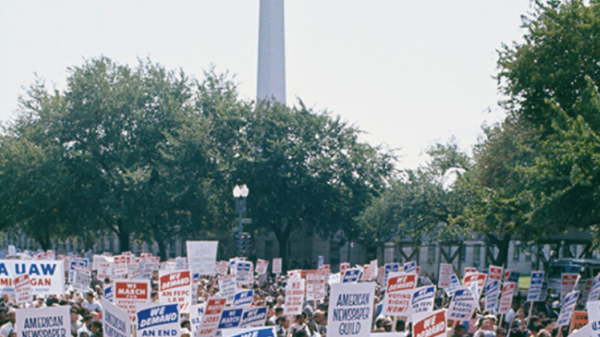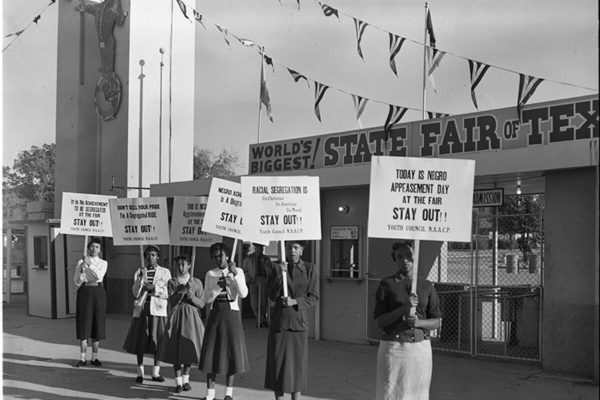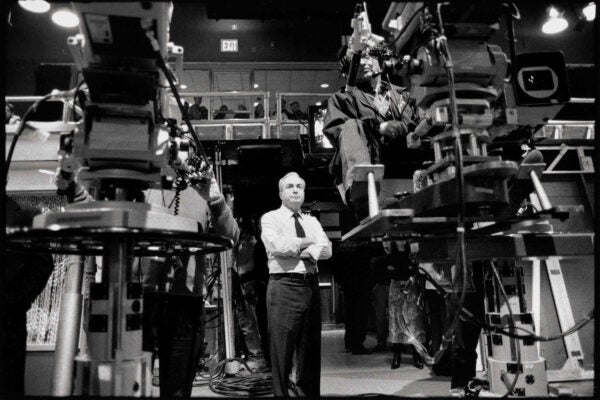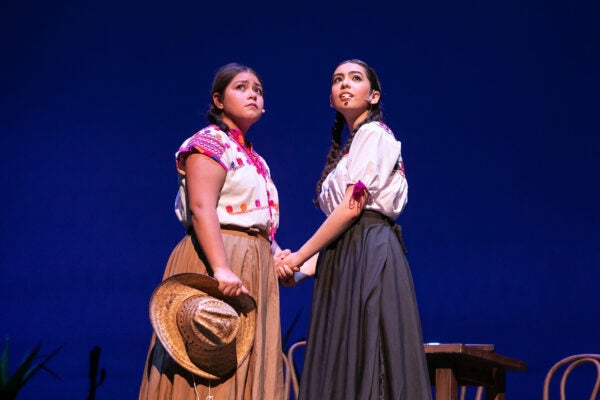About 18 miles of intensely organized shelving protects what Don Carleton, executive director of the Dolph Briscoe Center for American History, calls “the evidence of history.” The center collects and archives photographs, documents and many more artifacts of Texas and American history for faculty members, students and other researchers to use.
“You can’t write history if you don’t have the evidence to base your writing on,” Carleton says. “That’s what we provide.”
Texas history is the largest part of the Briscoe Center’s archive, but it also has major collections focused on civil rights and social justice, news media history, politics and more. Among the center’s prominent historical items are the first photographic record of the Alamo, from 1849, and the largest collection of original photos of Martin Luther King Jr.
“We’re not in the business of dead storage,” Carleton says. “We get this material because we want people to use it.”
With access on campus limited because of the COVID-19 pandemic, researchers — and anyone with an interest in history — can use the center’s online digital media database to view documents, photographs, illustrations, book excerpts, moving images, sound recordings and other artifacts. Although not all the center’s collections are available in the database, research requests for digitized materials are now online. Researchers can also receive photocopies and lower resolution digital photos remotely.
The online database includes 150,000 photographs and the complete archives of several major photojournalists. Rather than collect only a few of a photographer’s most popular images, the center tries to collect material from the person’s entire career, including personal journals, photo negatives and newspapers. Providing all these personal documents creates a story behind the image and artist and allows the viewer to see how the final image was chosen, says Ben Wright, assistant director of communications for the center.
“We understand that photographs are constructions,” Wright says. “They aren’t just capturing this snippet of reality.”
The Pulitzer Prize-winning Vietnam War photograph of South Vietnamese National Police Chief Brig. Gen. Nguyen Ngoc Loan executing a Vietcong officer in 1968, titled “Saigon Execution,” is included in the complete Eddie Adams photographic archive. The archive also features Adams’ war journals.
“Long ago, Eddie went back to his hotel after he took that picture and wrote a couple of pages of his thoughts about what he had just done,” Carleton says. “So, we have not only the photographs, but we have, in Eddie’s own words, what he was thinking, how he reacted, and what was going on.”
Other full archives include the works of Calvin Littlejohn and R.C. Hickman, two North Texas civil rights photographers, and Stephen Shames, the Black Panther Party’s photographer from 1967 to 1973.
To promote its archives and collections, the center creates exhibits, documentary films and books.
The new book “Struggle for Justice: Four Decades of Civil Rights Photography” was originally an exhibit that showcased the Briscoe Center’s extensive collection of photographs from the civil rights movement. “Struggle for Justice,” will be published by UT Press in December and features almost 60 photos taken from the 1930s to the early 1970s and includes images and stories from photojournalists James “Spider” Martin, Flip Schulke, Charles Moore, Hickman and many others.
“All of our exhibits have one purpose,” Carleton says. “It’s not that we’re trying to teach history or tell anyone some interpretation. We put our exhibits together to show students, faculty and other researchers what resources we have at the center, and the kinds of materials that we collect.”

FEATURED PHOTOGRAPHERS
James “Spider” Martin: Martin is most known for his coverage of Bloody Sunday, when John Lewis led 600 people to march through Selma, Alabama. They were beaten and gassed by state troopers on Edmund Pettus Bridge on March 7, 1965. When Martin captured Bloody Sunday, he was a photojournalist for The Birmingham News, and his photos helped build support for the protesters seeking racial justice.
Flip Schulke: Schulke is considered Martin Luther King Jr.’s personal photographer and traveled with the civil rights activist until his death in 1968. The Schulke collection at the Briscoe Center contains 300,000 images, including all of Schulke’s work on the civil rights movement, and his underwater and space flight images as well as his acclaimed photographs of Jacques Cousteau, Fidel Castro, John F. Kennedy and Muhammad Ali/Cassius Clay. UT’s statue of King is based on an image that Schulke took.
Charles Moore: Moore famously photographed Martin Luther King Jr.’s 1958 arrest in Montgomery, Alabama, for Life magazine. The Briscoe Center’s Moore archive includes original negatives, correspondence, diaries and news clippings. Some of the archive’s particularly interesting items are Moore’s annotated work prints that he made for photo editors to choose the perfect final image.
R.C. Hickman: After he returned from World War II as an Army photographer, Hickman photographed Dallas’ Black community during the civil rights era for the Dallas Star Post. His photography for NAACP court cases documented the inequities of school conditions in Dallas.
To see more photographs, go to the center’s website and navigate to “Browse Digital Collections.” You can also find digitized collections of historical documents, maps, audio and video and many more photographic archives.




